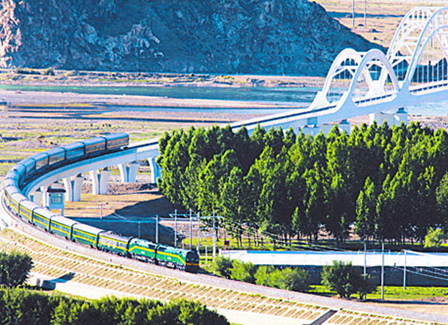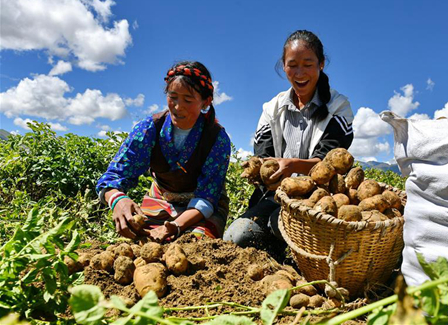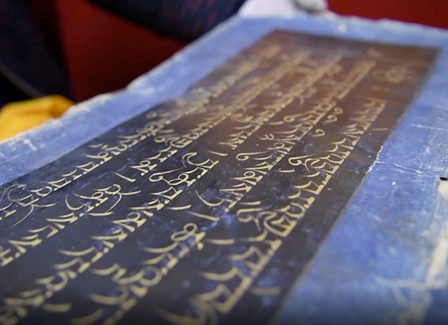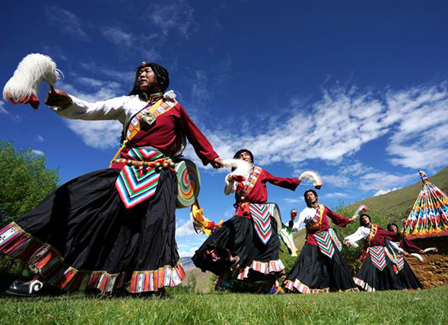-
White Paper May 21, 2021
Content
-
May 21, 2021
Foreword
On May 23, 1951, the Agreement of the Central People's Government and the Local Government of Tibet on Measures for the Peaceful Liberation of Tibet (the 17-Article Agreement) was signed. The people of Tibet broke free from the fetters of invading imperialism for good, embarking on a bright road of unity, progress and development with all the other ethnic groups in China.
-

May 21, 2021
I. Tibet Before the Peaceful Liberation
Tibet has been an integral part of Chinese territory since ancient times, and one of the main Tibetan-inhabited areas in China. In the aftermath of the Opium Wars in the middle of the 19th century, the UK-led imperialist powers began to cultivate the idea of "Tibet independence", intentionally undermining China's sovereignty and territorial integrity.
-

May 21, 2021
II. Peaceful Liberation
To address the complex and changing international landscape and the difficult situation in Tibet, and to satisfy the Tibetan people's wish for liberation as soon as possible, Mao Zedong wrote a letter to the CPC Central Committee while in Manzhouli on his way to the Soviet Union for a visit in December 1949. In the letter, Mao made the strategic decision that "it is better for the PLA to enter Tibet sooner rather than later."
-

May 21, 2021
III. Historic Changes in Society
The founding of the Tibet Autonomous Region and adoption of the socialist system provided a guarantee for the realization of ethnic equality, solidarity, mutual help, and common development and prosperity in the region. It also created the conditions for all ethnic groups in Tibet to enjoy equal rights to participate in the administration of regional and state affairs.
-

May 21, 2021
IV. Rapid Development of Various Undertakings
Thanks to the leadership of the Central People's Government and strong support from the rest of China, and to the great endeavors of people of all ethnic groups in the region, Tibet is catching up with other parts of the country in terms of socioeconomic development. With a more solid base, it enjoys better opportunities and enormous potential.
-

May 21, 2021
V. A Complete Victory over Poverty
Tibet was a contiguous poor area with the highest incidence and most severe level of poverty, where the cost of poverty eradication was highest and the difficulty greatest. Ending poverty in Tibet is a consistent policy of the Central People's Government.
-

May 21, 2021
VI. Protection and Development of Traditional Culture
China attaches great importance to the protection and development of traditional Tibetan culture. It has invested huge human, financial and material resources to protect, develop and carry forward the fine traditional culture of Tibet through a variety of legal, economic and administrative means.
-

May 21, 2021
VII. Remarkable Results in Ethnic and Religious Work
The state formulates guidelines and policies to fully implement the system of regional ethnic autonomy, protect normal religious activities in accordance with the law, and promote the unity and common prosperity of all ethnic groups.
-

May 21, 2021
VIII. Solid Environmental Safety Barriers
The Qinghai-Tibet Plateau is known as "the roof of the world" and "the water tower of Asia." Tibet is an important guarantor of China's environmental security. The Chinese government attaches great importance to eco-environmental protection in Tibet.
-

May 21, 2021
IX. Resolutely Safeguarding National Unity and Social Stability
National unity and social stability are important guarantors of all the undertakings of Tibet, and a solid buttress ensuring a happy life for all ethnic groups in Tibet. The Chinese government has taken effective measures to maintain social stability and harmony in the region.
-

May 21, 2021
X. Embarking on a New Journey in the New Era
In the new era, Tibet is enjoying rapid and sustained growth thanks to social harmony and stability. All those counties formerly classified as poor have risen out of poverty, and the people are leading better lives in every respect. Environmental safeguards in the region have been strengthened. Ethnic unity has been enhanced, religion has found its place in a socialist society, and the borders are secure. Everywhere Tibet is thriving and prospering.
-
May 21, 2021
Conclusion
Justice prevails when the mighty wind sweeps all evils away. Seventy years have flashed by in the long course of history. During these seven decades, the CPC has united and led the ethnic peoples of Tibet to achieve historic change and unprecedented success. A thousand years of darkness have dissipated in decades, and Tibet has broken free from its backward, autocratic, isolated past to embrace prosperity, democracy, and an open future. In a fast-changing society with a thriving economy, the Tibetan people lead better, happier lives.